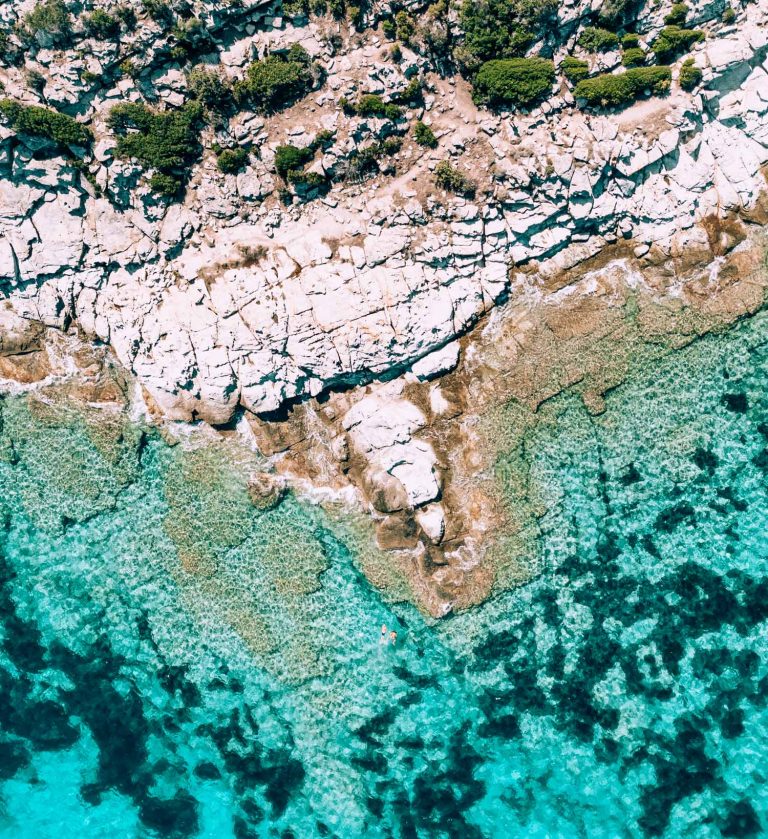This post contains affiliate links. Using these links will not cost you anything extra, but makes sure I earn a small percentage if you buy through those links.
You have probably seen videos and photographs of the famous orange battle in northern Italy: men and women in medieval costumes throwing oranges at each other, creating a true blood orange bath. Not to be confused with the Spanish carnival where they throw tomatoes, the carnival is unique to the city of Ivrea, and has been celebrated for decades. This year, Wessel and I were lucky enough to participate in the festivities after our skiing trip to La Norma.
Wessel’s friend invited us to partake in these celebrations, and he and his friends told us all about the history and myth that is said to be the origin of the carnival, invited us to their parents’ home for food, and showed us the ropes when it came to throwing oranges. We can say this was one of the most unique traditions we have both experienced in our lives! Want to know more? Below I tell you all about the history of the carnival, whether you can participate as well, and especially what it was like for us as outsiders. So, grab your orange juice, and let’s get into it.
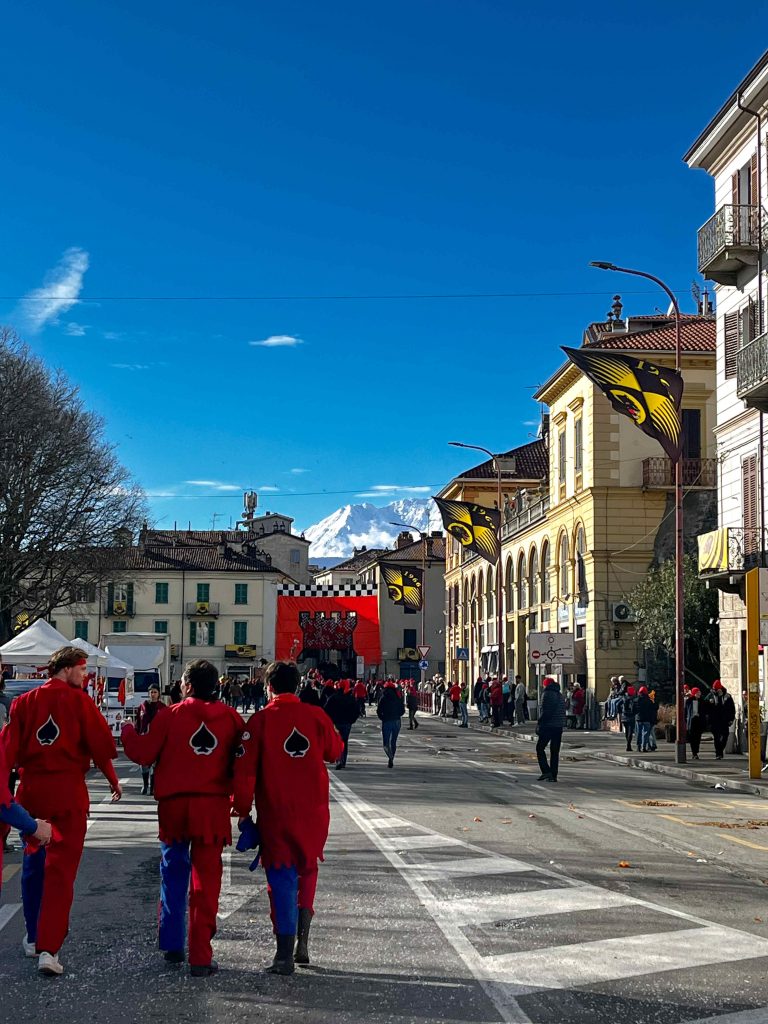
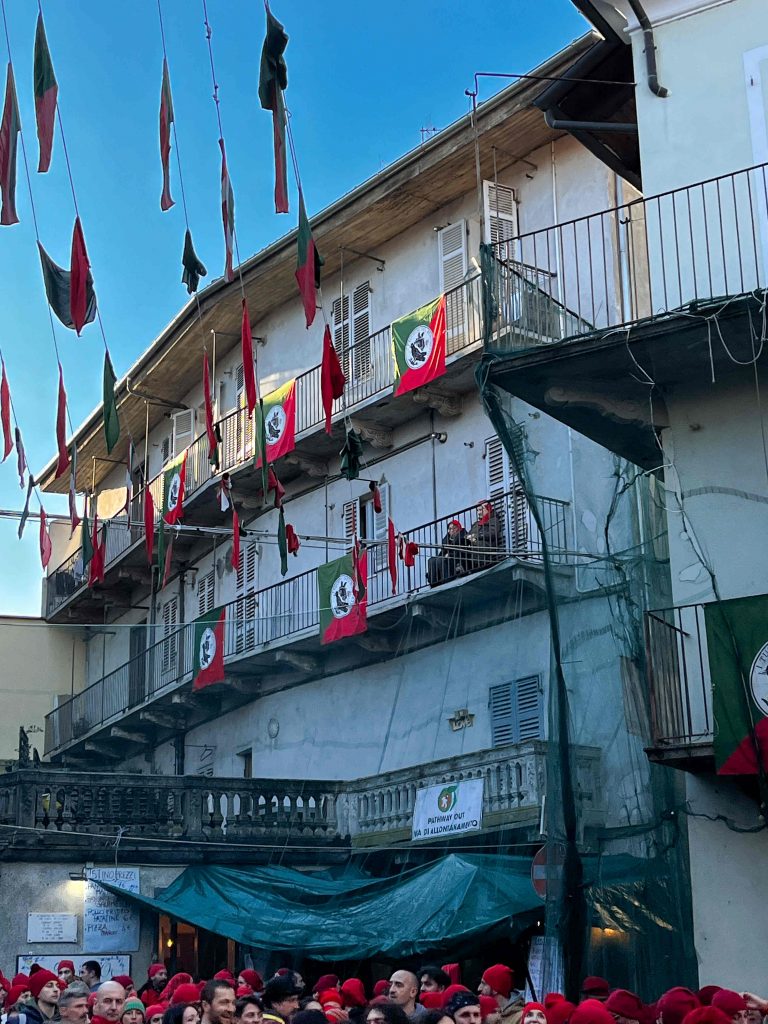
History of the Carnival
During the Middle Ages, it was said Ivrea was ruled by a tyrant. As the will of a tyrant is law, besides terrorizing the common people, he wished to sleep with every newlywed young woman in the city. One of them, called Violetta, the miller’s daughter or La Mugnaia, had to go up there on her faithful night. However, instead of complying with the tyrant’s wishes, she decapitated him instead and showed his head on the balcony to the people of the city below, which kickstarted the revolution. In the days after, the commoners defeated the aristocracy and the army and freed the city, not because they had better weapons (they were throwing beans, stones, and using everything they could), but because they were with many.
Every year the city of Ivrea replays the revolution. The Mugnaia and her husband the General kick off the festival by waving from the balcony, and partake in many parades later. When you see these parades, you see lots of men wearing Napoleon-style costumes, which dates from the French occupation of Italy in the 19th century. Our friends told us you have to be very rich to play the Mugnaia, as you have to pay for everything: the parades, the fireworks, candy that is tossed around, and much more. The battle between the revolutionaries and tyrant’s army is replayed with the Battle of the Oranges. They used to throw beans, then apples, and later oranges, which is not clear why they chose oranges, as they are imported from Sicily and do not grow in Northern Italy.
The tyrant’s army throws oranges from carts pulled by horses, and they wear full armor to protect them from the very enthusiastic aranceri (orange-throwers) on the ground. The revolutionaries are split into nine teams, which all originated at different years in the second half of the 20th century. Every team has a specific name and identity, and thus wears their own costume. Everyone in Ivrea who participates in the battle and festivities pays a yearly membership fee that allows them to take oranges from the crates. We were part of the oldest team, called the Asso di Picche, or ace of spades, which meant we wore red and black/blue costumes and were allowed to participate in the fight on the main town square.
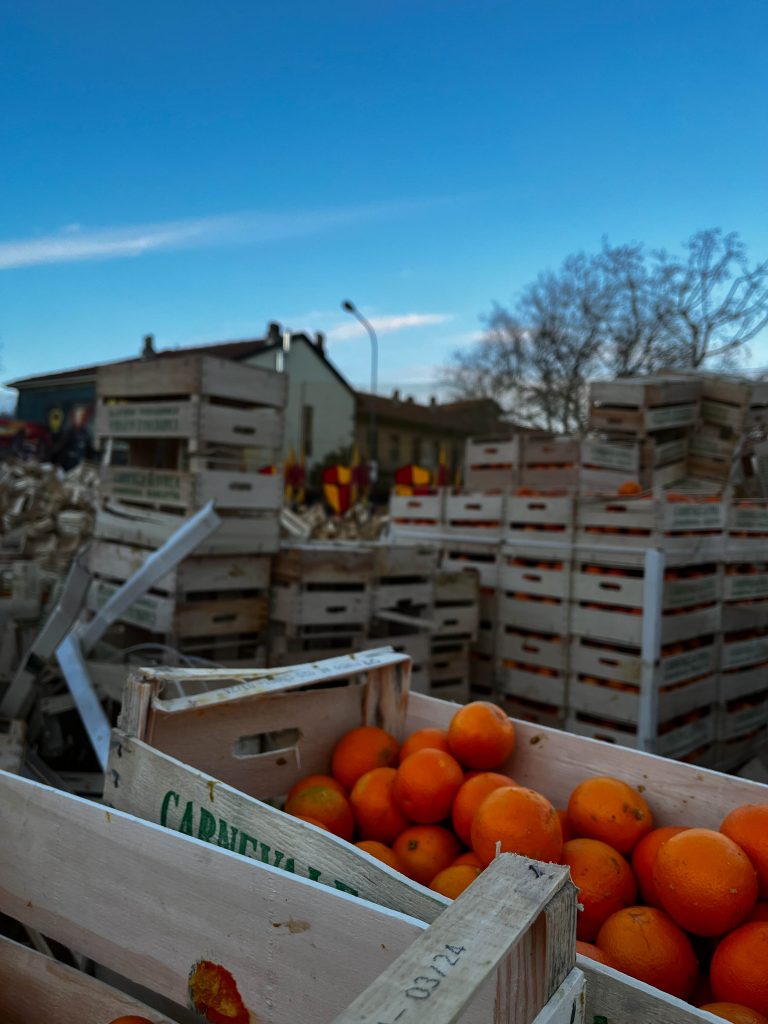
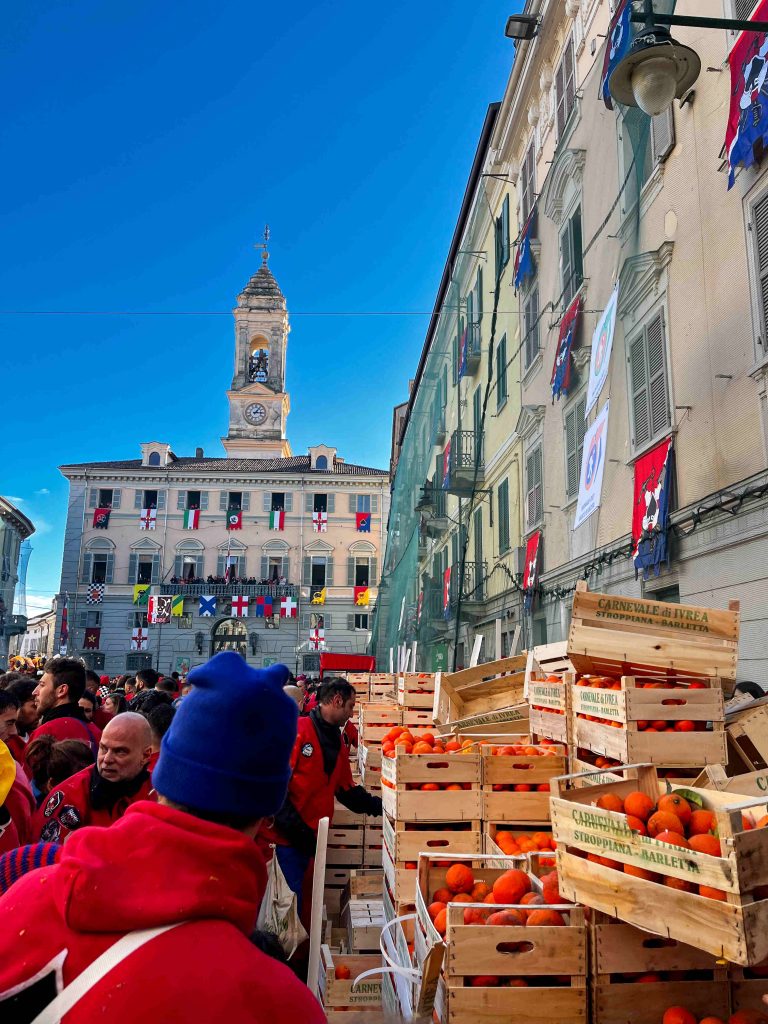
Can You Participate in the Carnival as a Tourist?
As I mentioned last in the previous paragraph, to be able to get oranges from the crates you have to be a paying member of the team. If you are just visiting, you will have to pick up your oranges from the ground. Also, it is important to note you should wear a red hat (see photo below) if you do not want to get oranges thrown at your head. Even though I wore one, I still got some loose cannonballs on the back of my head, which hurt really bad.
If the Orange Battle is something you truly want to do, I would still urge you to not go on your own. The carnival is a community celebration, which has been a tradition for centuries, and you will not see many other tourists there. Because the festival is so old, there are many (unwritten) rules, guidelines, and just respectful ways to behave yourself. Without our friends, I would surely have been very overwhelmed with the amount of people, the galloping horses carrying the carts, and the many black eyes and bloody noses I saw.
If you want to participate, you also have to be part of a team and get a ticket for the carnival: the only way you will be able to participate is with a local who is part of a team, who will provide you with a proper costume and who will show you the ropes. The carnival is also not meant to be an overly touristic site, so doing your research and listening to your host is the most respectful way to experience this one-of-a-kind event. If you are not interested in the cultural richness of the carnival, I would urge you to sit this one out, as the history, tradition, and culture is the most important part: not respecting that will make you stick out like a sore thumb, and you will be kindly asked what the heck you are doing there (don’t worry, no one will get violent, even though there are bloody noses everywhere). Now the lecture is over, I will take you along with our experience at the Carnival of Ivrea.
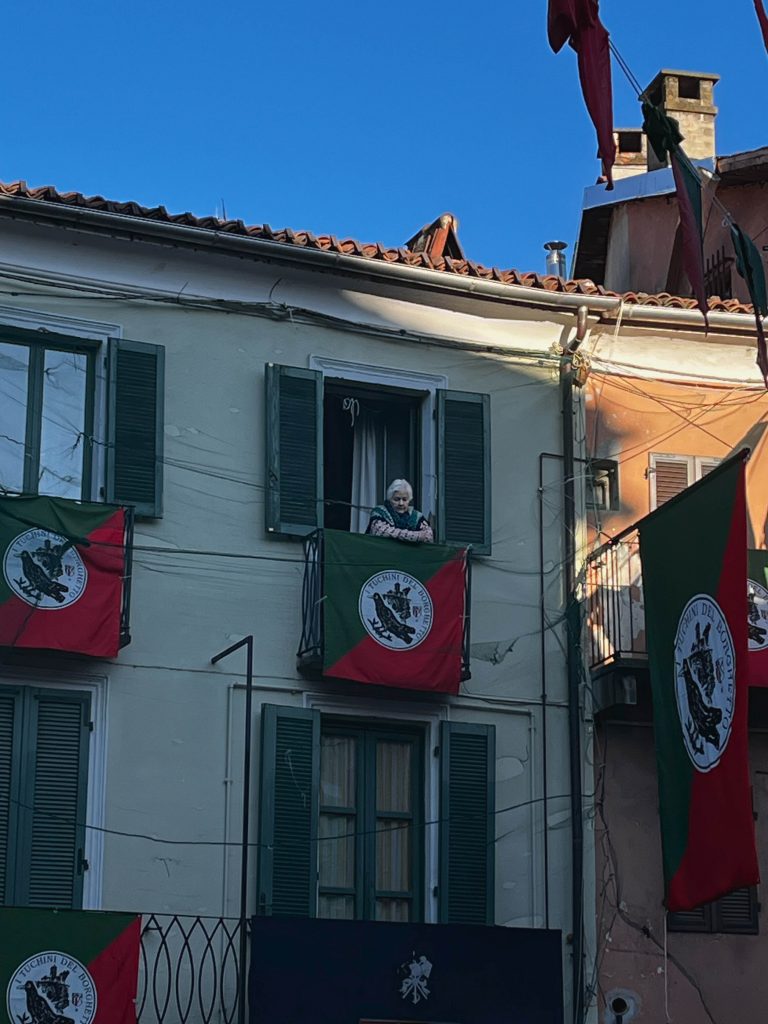
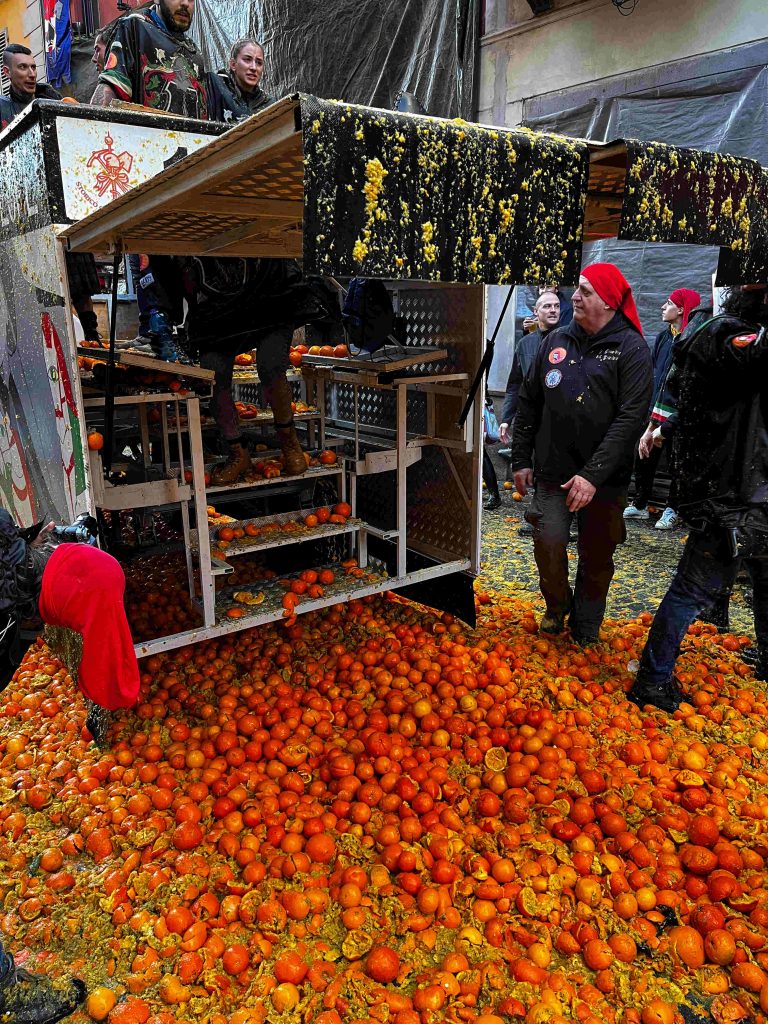
Our Experience at the Carnival of Ivrea
A Night of Aperitivo and Dancing
On Saturday, the last day of our skiing trip in La Norma, we hit the mountain one last time, and started driving towards Cuorgné around two PM. It was a two-hour drive as we took the Fréjus-tunnel through the mountains and across the border. Once we arrived at Wessels friends place, where we would stay the coming two nights, him and his boyfriend were awaiting us with tea and some sweets. They told us his family had invited us for aperitivo at their newly renovated apartment in Ivrea, where some of his friends were waiting as well.
In Ivrea, we found a warm welcome. Wessel and I were completely blown away by the amount of gorgeous food and the hospitality, as we had never met his family and friends before. His parents had set the table with lots of food and wine and were still cooking in the kitchen. The night was filled with good conversation, and we learned a lot about traditional Piemontese dishes, and the carnival of course.
My favorite dish of the evening was farinata, which looks like a yellow pizza made of chickpea flower, water, and salt. Like everything in Italy, the flavors were so well-balanced, while the ingredients were so simple, I knew I had to make this one day. Apparently it is very difficult to get it just right: is should not be too thick or too thin, otherwise it will not be soft and crispy enough at the same time.
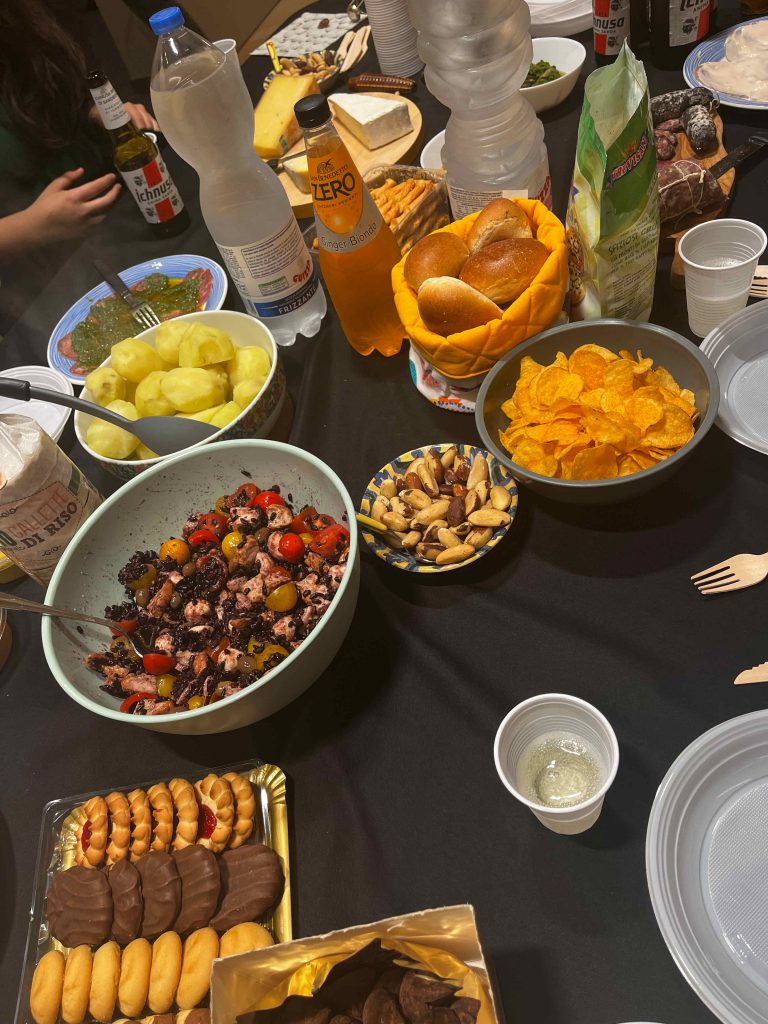
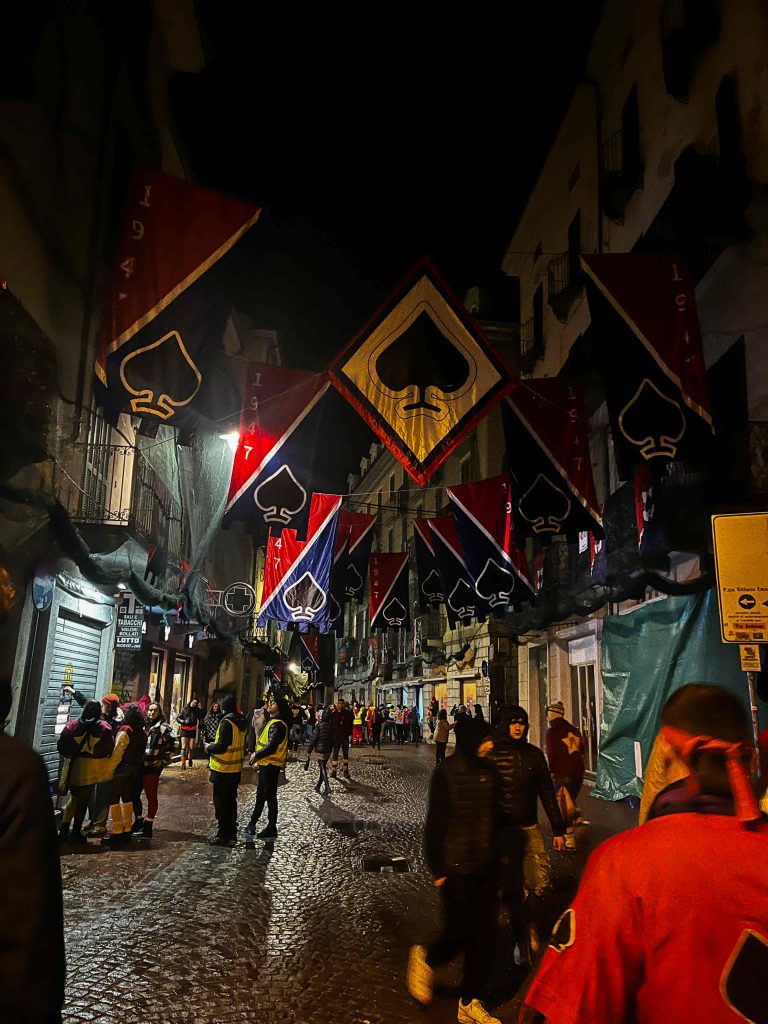
We also had lots of good cheese with boiled potatoes, which was also typical for the region (and which I will be doing in the future). The black rice salad with chicken and mozzarella will also be added to my arsenal of ‘to-be-cooked recipes’, as will the sardines with green herbs, and the vitello tonnato. Luckily, we will be going back to Piemonte this summer to learn more about their food!
After the aperitivo, which was our dinner as well (thank God, I could not have eaten more), we went out into the city, where celebrations had started already. I had visited Ivrea before in 2013 or 2014 as an exchange student, but I could not remember the city: windows of shops were wearing protective tarps, and there were flags everywhere, showing the different symbols of the teams.
On several squares, DJ booths were set up and several stores and market stands were selling food and drinks. We tried some local drinks and danced in the rain. They said this year the parties were less crowded because of the rain, but I still thought there were quite some people around. At a certain point I felt a little overwhelmed, and an hour later or so we left. Wessel and I slept in the car on the way back because we had a very long day of skiing, driving, packing, cleaning and then a party. We were super grateful for this evening though, and all the lovely people that invited us to celebrate with them. So, we went to bed looking forward to the exciting day ahead.
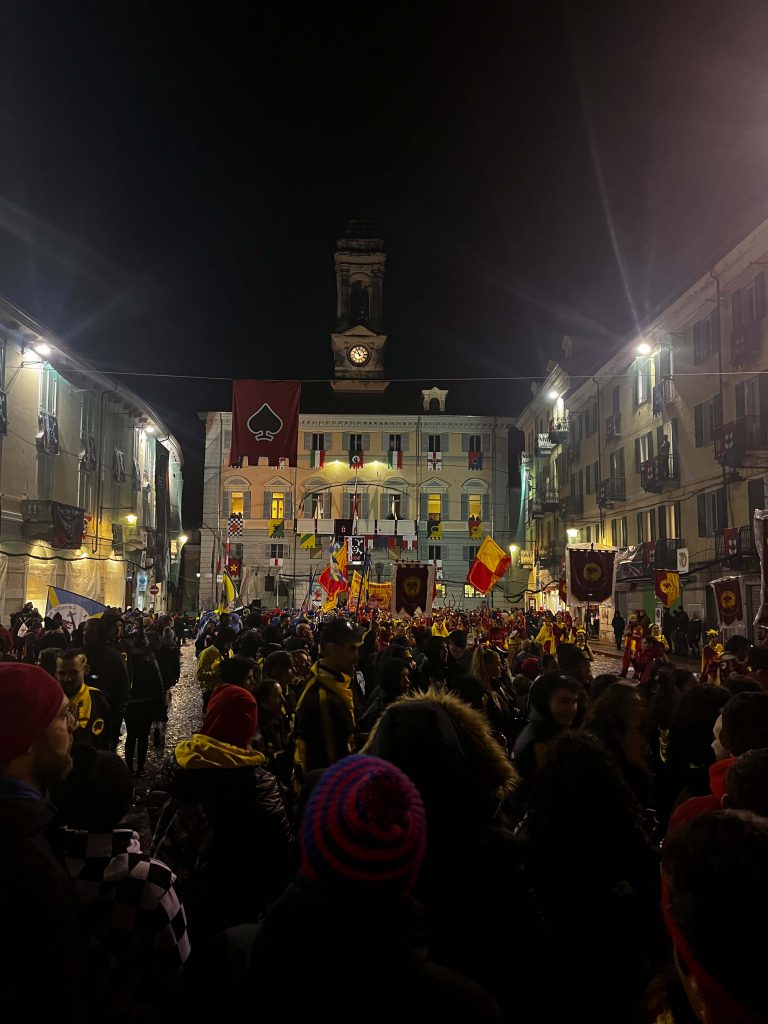

The Morning of the Bean Soup: Fagiolata
The next morning, we woke up to a typical Italian breakfast: cookies and chocolate. While Wessel is more of a savory-breakfast kinda-guy, I love my Nutella sandwich. With some good coffee in our bellies, it was time to head back to Ivrea. On the way there we stopped by a cheap shoe place to get some rain boots, as my feet would not stay dry in my old sneakers. After getting a good pair for only €17, we quickly drove to S. Lorenzo, the neighbourhood where we would get some bean soup.

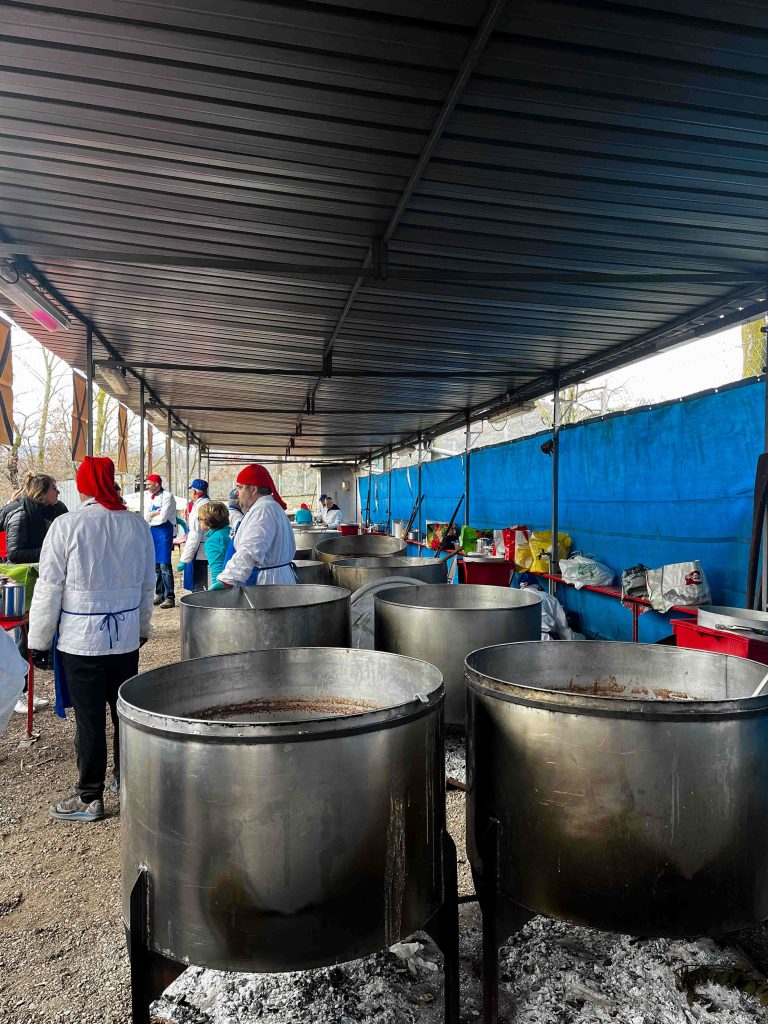
We were a bit in a rush, as they were about to close up, but once we got there, we saw that the big pots with bean soup were still being kept warm over a fire. Now, it looks absolutely awful, but the taste of the bean soup was amazing. The chefs are mainly a couple of families who start the process of the making of the soup weeks in advance: picking out the right beans by hand (literally going through a bag one by one), and preparing the meat. The night before, they cook the soup with pig meat and fat through the night, giving it a very rich flavor.
So, there we were, at 11 am with a small bowl of soup and a cup of red wine. I could have eaten more soup at that point, but our friend’s parents took a smaller pot home with them for lunch. This pot contained all the best parts: sausages, rolled up pieces of fat and even a pig tail! Apparently, you will only get the good stuff when you know the cook well. Luckily for us, we had some mutual friends now!
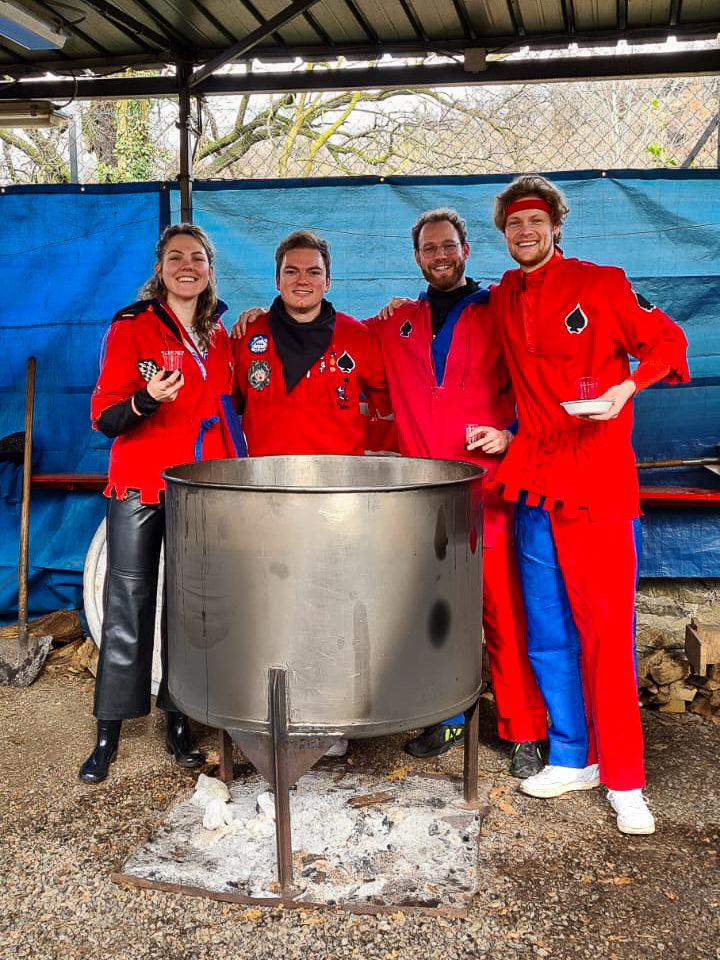
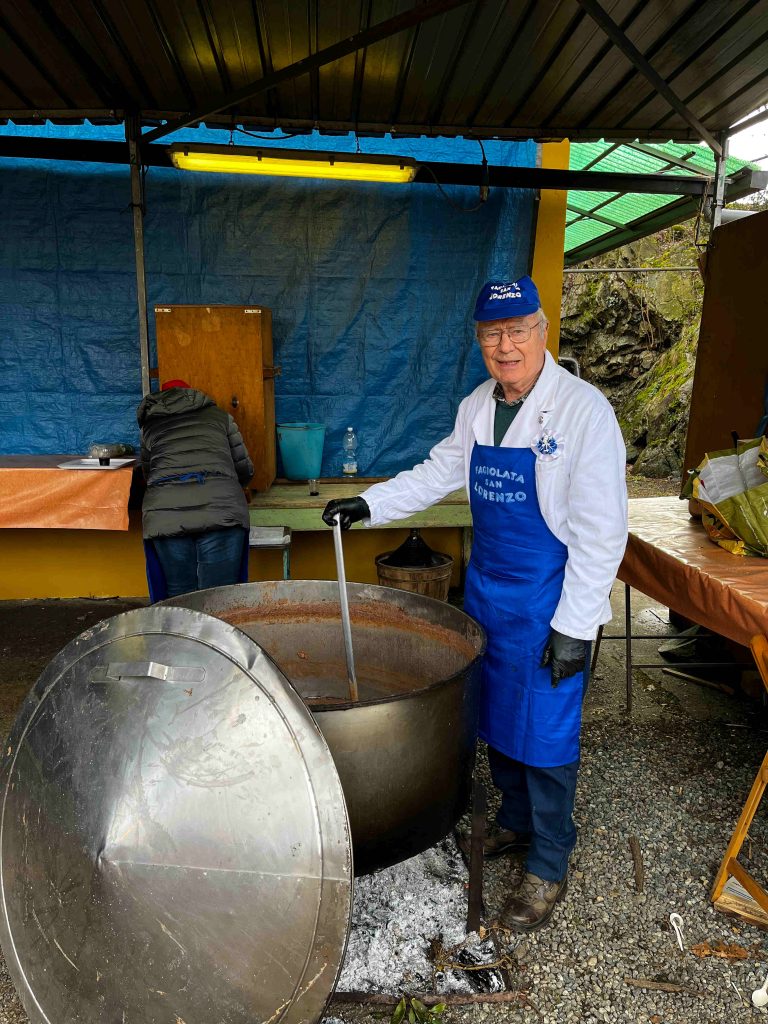
Lunch with Pig Tails, Pasta, and Prosecco
We were invited back for lunch at our friend’s parents’ place. The table was set with leftovers from the day before, the bean soup and they were still cooking up some pasta. As the bean soup was put on the table, our friend’s father remarked that the pig tail was very good. I am generally not a bad eater, but I was a little bit nervous about the pig tail. Still, I wanted to try it: when else would we ever be able to try a pig tail again? I have a picture of what it looked like, but it looks a little phallic, so I won’t be sharing that here. Just know it is a lot straighter, fatter, and hairier than you would think.
Wessel tried it first, which went well, though he did not like the hairs. I did not taste any hairs, and thought it was quite good. We gave the rest of it to his father anyways, as he would appreciate it more than we would. Once again, we absolutely loved all the food that was on the table. And the wine! Needless to say, after lunch we were in a food coma, and I could really not envision myself in an orange fight. After some rest for our bellies, it was time to go, though, and undergo this experience we had heard so much about – especially warnings about protecting our face.
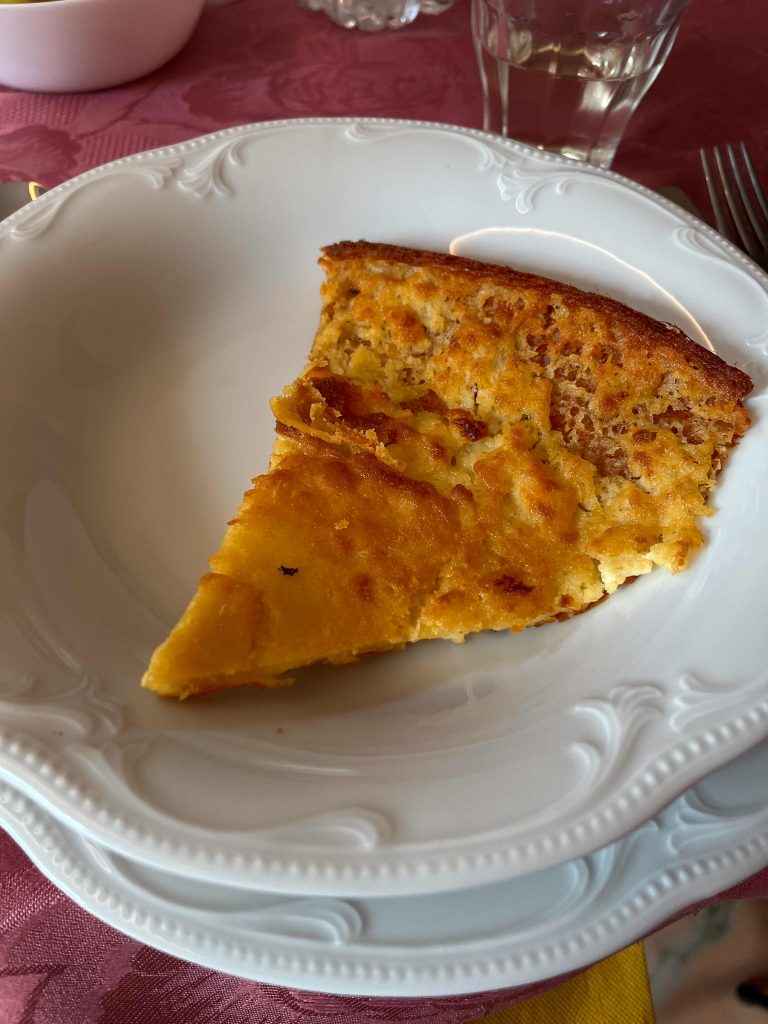
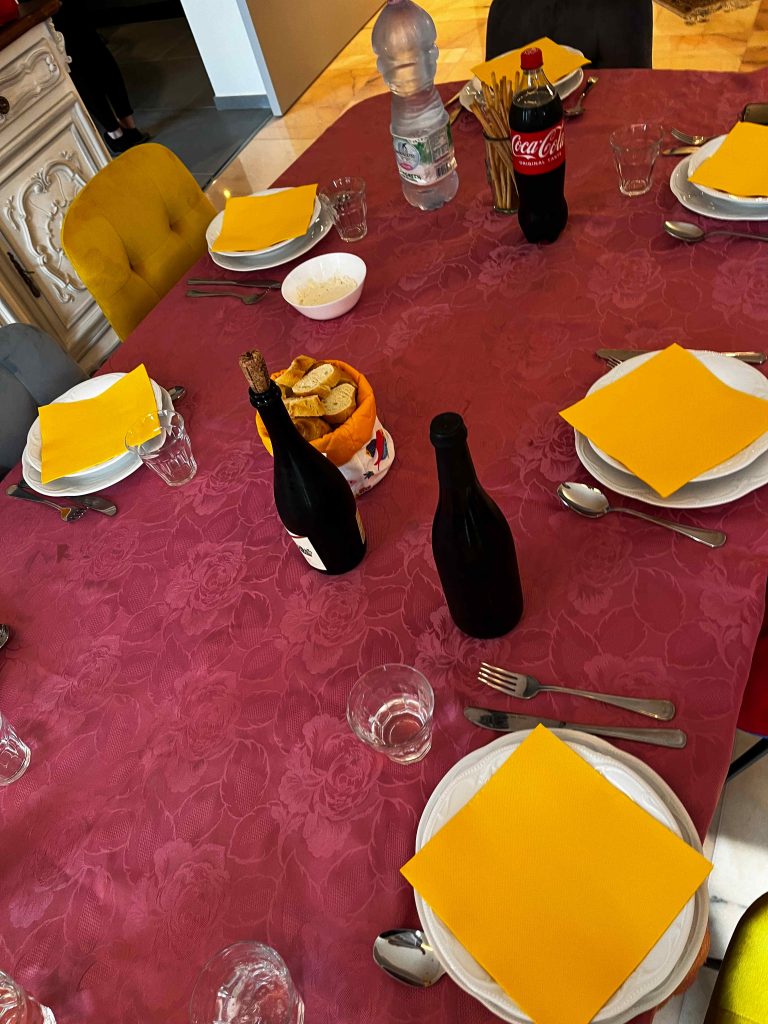
The Battle of the Oranges
As we walked towards the city center, we spotted our first oranges. Just a couple, here and there: the battle had only just started. After passing the guards that scanned our tickets, it was time to take our positions on the main square. We quickly saw the first carriage, but the aranceri were not wearing their helmets. We were told you were absolutely not allowed to through at them without their helmets on, which made absolute sense after seeing the first ‘foot-soldier’ with a bloody nose. Right before entering the square, we saw a one on one fight where they were throwing oranges like crazy: so fast and with such force, I was not surprised when we were told that they train all year for this. They pick up rocks and practice throwing techniques by the river for the rest of the year.
At first, I just observed the battle and kept my face protected with my arms: it was quite intimidating to see a carriage with immense horses running towards you while oranges are flying through the air like cannonballs. After a couple of rounds, I carefully started picking up some oranges and threw some at the carriages. As time went on I got more confident, although I have never been good at sports that involve balls, so my throwing skills are terrible. Wessel, on the other hand, a seasoned volleyball player, was covered in oranges in no time and constantly had a supply in the special bags we got for the event. He even got recruited by a group of guys from our team who explained several tactics to him.

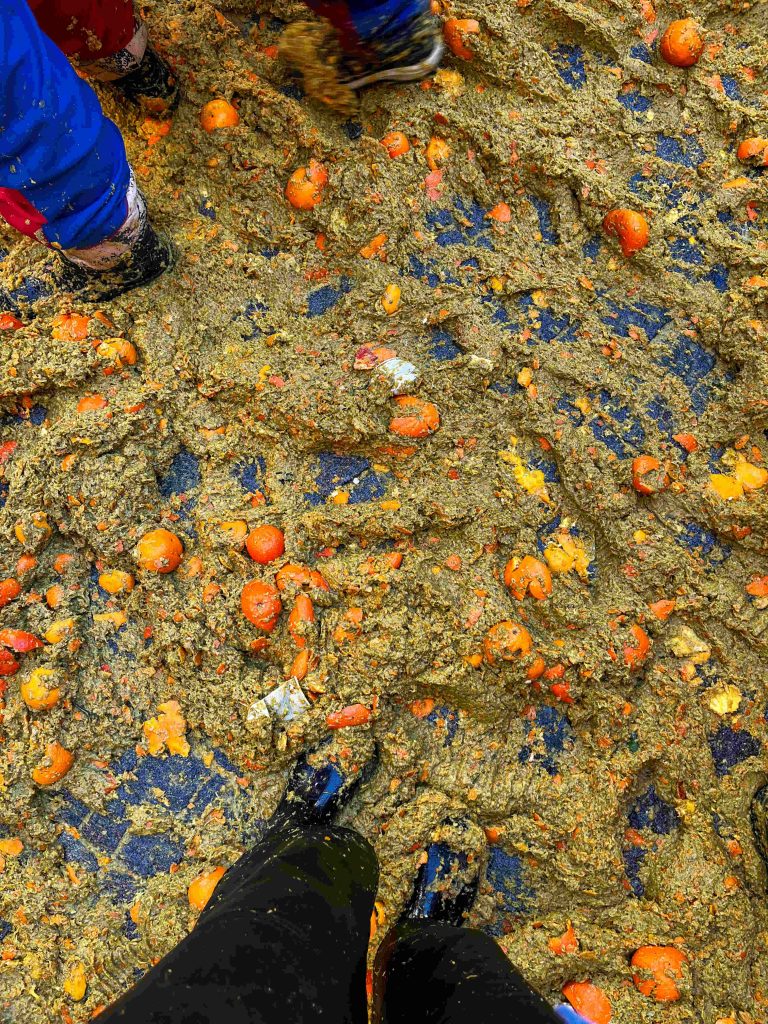
Suddenly, I was hit pretty hard on the back of my head, which made me cry a little. I am really bad when it comes to sudden pain, so I decided to watch from behind the nets that lined the buildings. These were meant to protect the people on the balconies and onlookers on the ground. This was even worse though, as people kept crushing me against the wall, trying to dodge the oranges, completely suffocating me. The oranges also were thrown a little harder here, as the walls would bounce them back. This was fine for the smaller people, but I am pretty tall and an easy target.
So, I gathered my courage and walked back through the orange-mud, which reached my angles at that point. I threw a couple of more oranges, but after getting hit in the head again, I was done and longing for a drink. The battle was also coming to an end, and soon after we walked towards another square where we got some drinks and watched the parade. The Munyaya threw candy and flowers, while the General looked proud on his white stallion. Our friends told us, however, that the Munyaya usually buys fancier candy like chocolate: the woman portraying her this year apparently did not spend as much as the one before her.
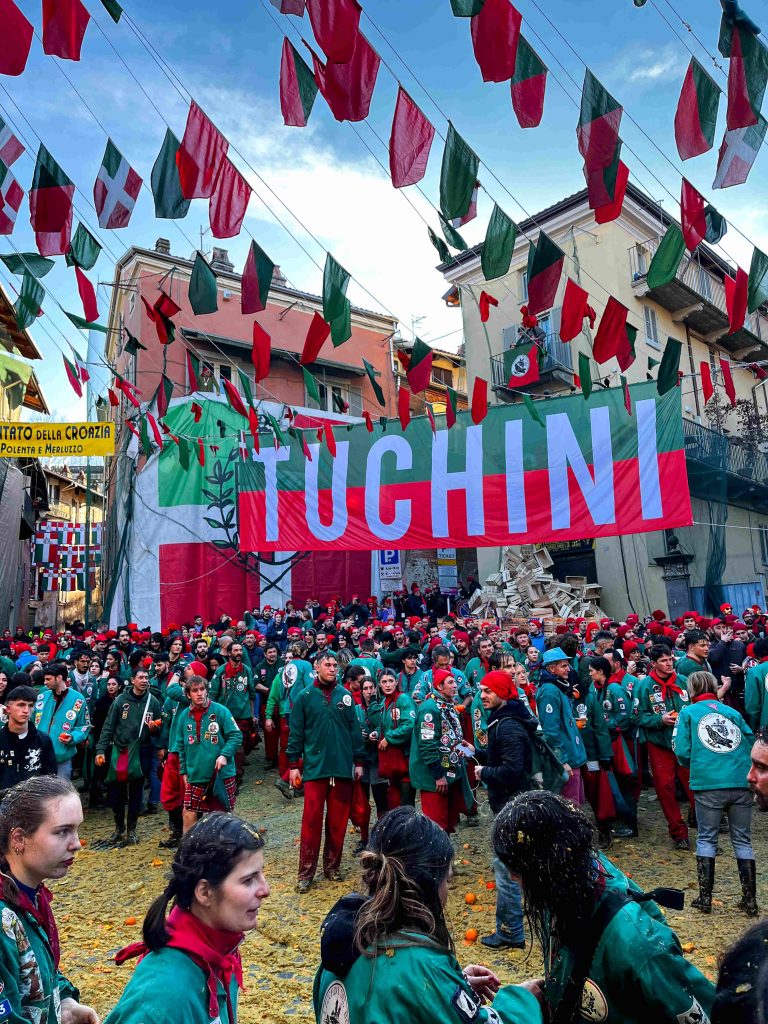
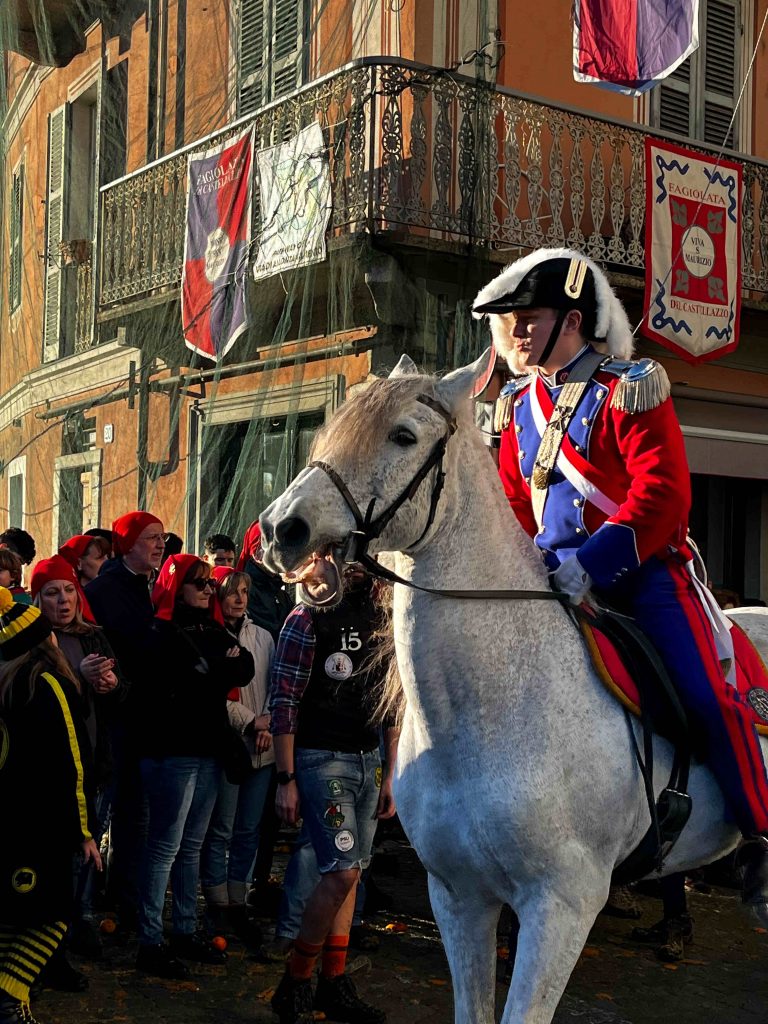
We walked around a bit more after the parade, had some hot wine and danced to the music of a DJ who was born in Ivrea, but apparently also played at ADE and other dance festivals. We chatted a bit more with friends from friends, but when the sun started to set, we decided to head back to our friend’s parents, where we were allowed to take a shower. They really were the best hosts! His mother even gave me a bracelet with an orange on it, so I would always remember this experience, which was the sweetest thing.
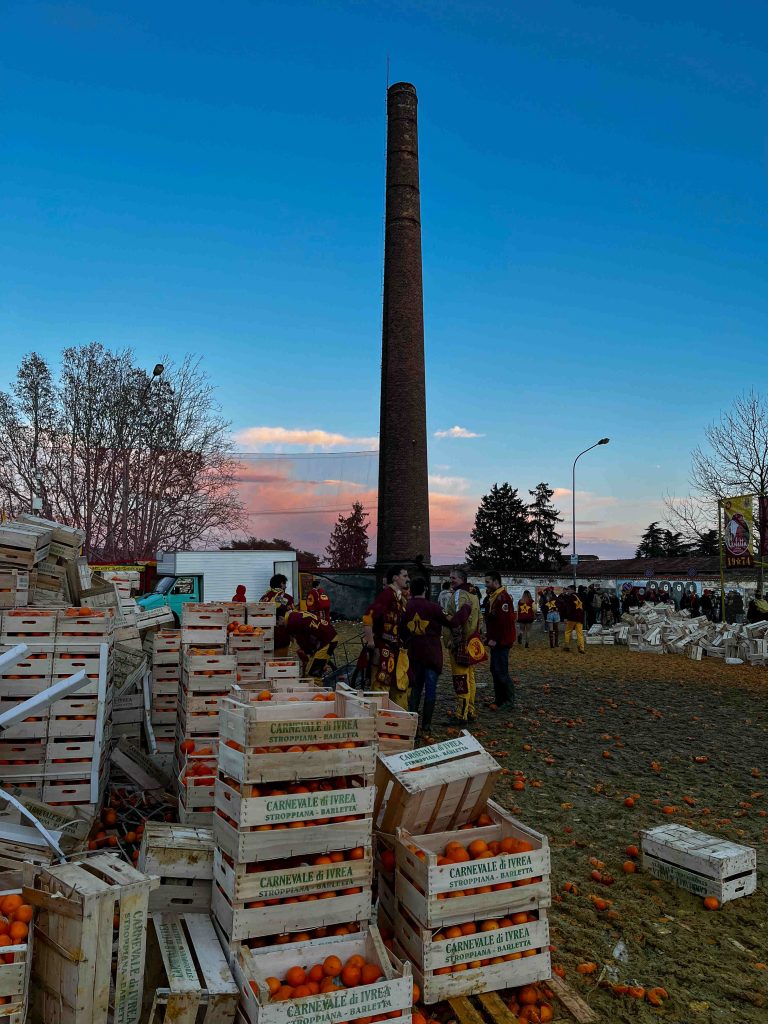
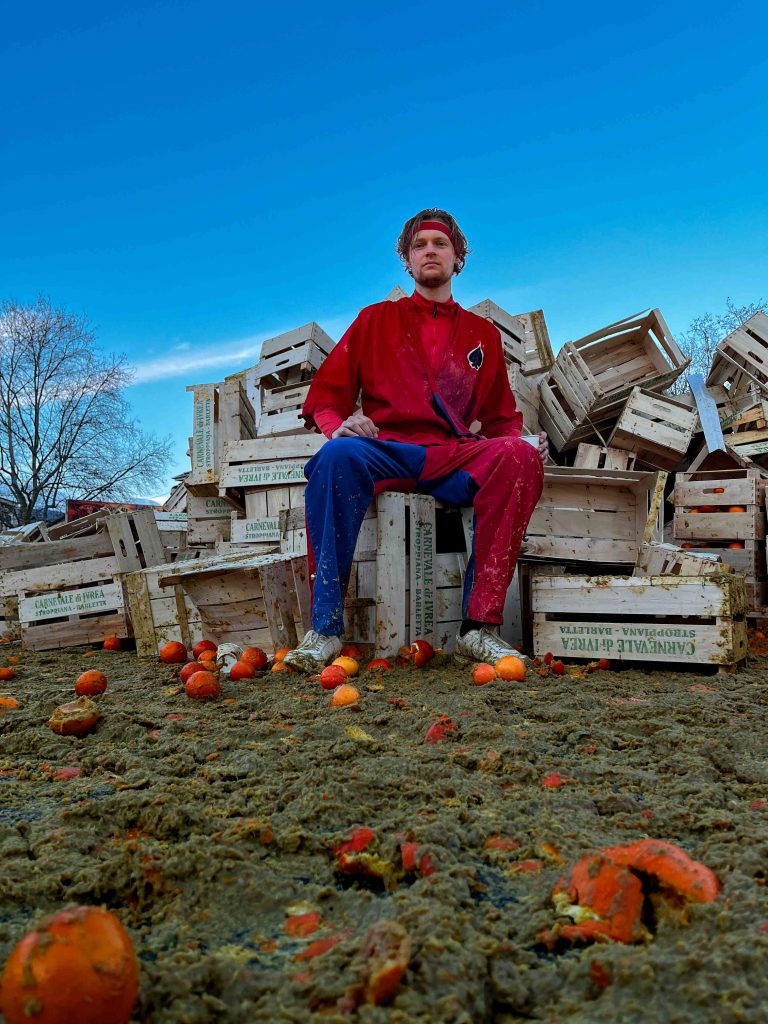
Post-Battle Pizza and Fireworks
I did not think I would be, because of the amount of food we had, but I was craving post-battle pizza so bad! We went to a new pizzeria called Pizza Vip, just around the corner, where they had about fifty different types of pizza, which made it insanely hard to pick one. Every pizza could be made gluten-free as well, and if you know me, you will know I can be indecisive. Eventually I picked one, with burrata, pistachio, bacon which is definitely not called bacon in Italy, and tomato sauce. With a prosecco in hand, you can say I was a very happy girl.
After that amazing shower, the delicious pizza, and a little bit of wine, Wessel and I were both feeling quite drowsy. We had one more thing on our to-do list though: looking at the fireworks on the riverbank. The fireworks were the best I had ever seen! In my life, I only saw fireworks neighbors bought for new year’s, which is nothing compared to this. But, our friends told us it was worse than the year before. Apparently, the people were not a huge fan of this year’s Mungaia…
After the fireworks, we said goodbye to our friends’ family and headed back. We were completely exhausted, but knew this experience would go down for the books. The next day, however, we would be driving back home, and were planning on leaving very early in the morning. We said our thanks and fell asleep straight away: still smelling the oranges in our dreams.
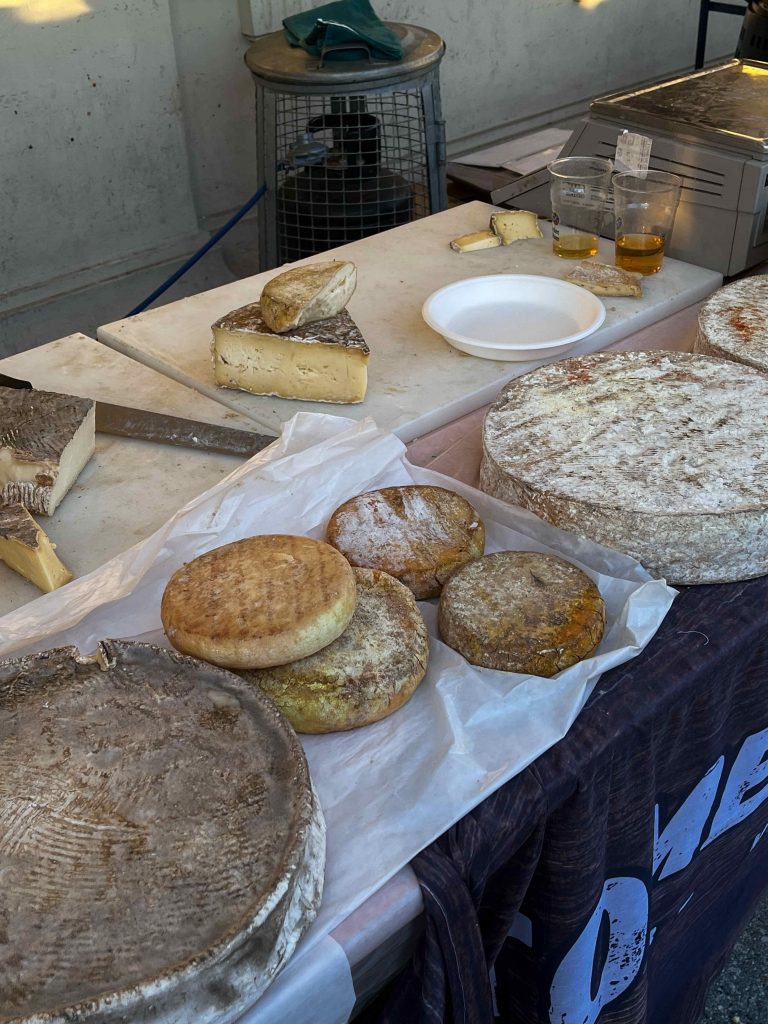
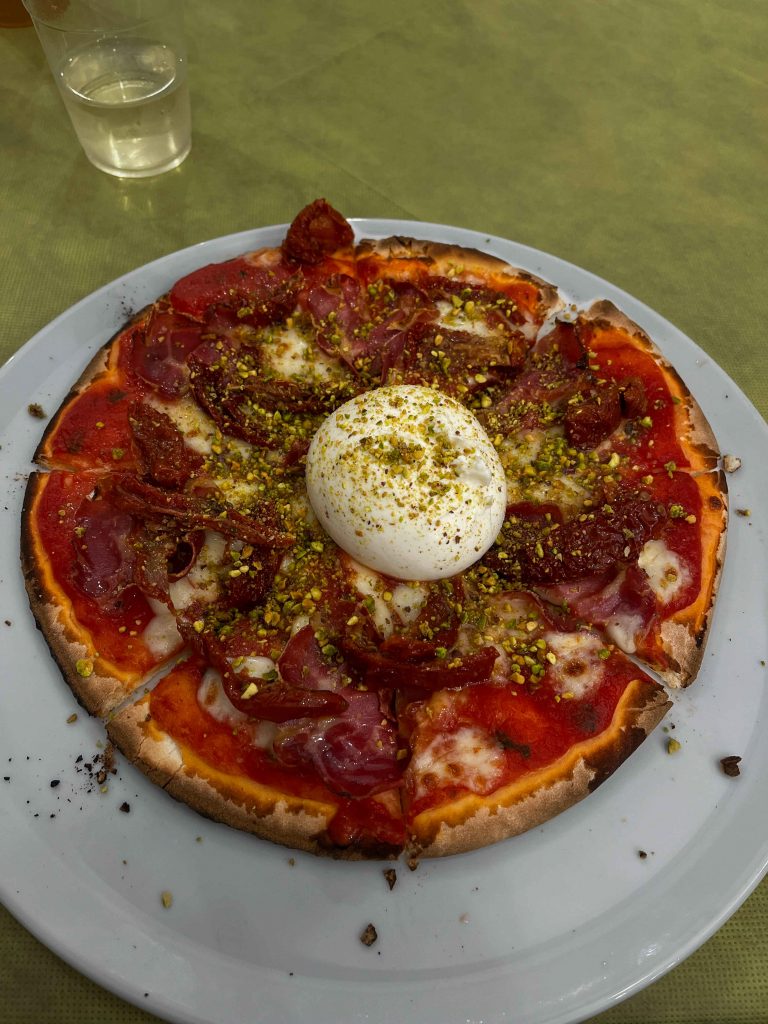
Where to Stay and Final Thoughts
Accommodation is so important, when it comes to travel, and in this case, it can make or break your stay. There are some nice hotels you could stay at, if you are there with friends or family from Ivrea who do not have a guest bedroom. If you do not know anyone there, though, I would strongly advice you to stay at a homestay where the locals will take you along for the ride.
It was an amazing experience, and we are still so grateful to our friends and their family for hosting us and making our time so special. If someone invites you, or you know someone from Ivrea, you should definitely experience the carnival together. However, if you do not know anyone who can guide you through the carnival, I would make sure you find someone anyways, I repeat, this is not a tourist attraction, and I recommend you only visit as a guest!
For me, experiencing this once was enough, but we will be coming back to Piemonte this year to go WWOOFing and learn everything there is to learn about their food, wine, and culture. If you want to stay up-to-date with all of my travels in the future, make sure to follow me on Instagram or sign up for my newsletter, and get a gluten-free world map, for free!


